Top of Page
- Links to move inside this page.
- HOME
- Investor Relations
- IR Library
- QAs from earnings release meetings and others
- 2Q FY20 Results Briefing (Online)
QAs from earnings release meetings and others
November 9, 2020: 2Q FY20 Financial Results Briefing (Online)
(*) This is a summary of questions and answers took place at the Briefing.
- Question: IP services revenue growth rate has been quite strong: 1Q20 up 9.4% year over year, 2Q20 up 10.8% year over year, respectively. What is your outlook going forward, after the COVID-19 pandemic going down and the next fiscal year?
- Answer: The change in Japanese enterprises’ understanding about IT and network seems quite irreversible. Not only IP services, but demands to utilize various network services to improve efficiency are becoming stronger both from private and public sectors. We expect such demand trend should continue after the COVID-19 pandemic going down.
- Question: Outsourcing services revenue has also been strongly growing: 1Q20 up 8.5% year over year, 2Q20 up 9.8% year over year, respectively. What kind of outsourcing services has been receiving such demands?
- Answer: Demands for security services continue to be strong. For example, our e-mail outsourcing service “IIJ Secure MX Services,” which we have been developing in-house and providing since the 2000s, has been accumulating accounts. We continue to enhance its service functions and competitors are leaving the related market. As for network services other than security services, demands for secured and reliable VPN services, IIJ Flex Mobility Service, are quite strong.
- Question: In the middle-to-long term, how much do you think network services gross profit ratio could improve?
- Answer: Because network services’ costs are mostly fixed type and common cost, such as operation costs for Internet backbone and service development costs, when we have favorable revenue accumulation, gross profit ratio could be over 20%. 2Q20 network services gross profit ratio of 19.9% includes mobile services, which gross profit ratio is around 13%.We expect we can improve mobile services' gross profit ratio by acquiring enterprise mobile traffic such as IoT to achieve better utilized mobile infrastructure. So, in the middle-to-long term, we believe we could further improve network services gross profit ratio.
- Question: How are demands for IoT projects?
- Answer: Adding to demands to connect devices such as surveillance cameras, we are seeing growing demands to visualize manufacturing process like the one seen in Toyota Motor Hokkaido's factory IoT
 . Other various demands such as Agriculture IoT, HACCP (food safety management) and Home IoT are also increasing.
. Other various demands such as Agriculture IoT, HACCP (food safety management) and Home IoT are also increasing.
- Question: 2Q20 order-received for Systems Integration (SI)'s construction increased by 30.4% YoY. How did it grow so much?
- Answer: SI revenue and order received for a period fluctuates due to the timing of recognition. As 1Q20 order-received was weak due to restricted sales activity, such as not able to visit clients’ offices, 2Q20 was relatively strong in that contrast.
- Question: While SI revenue has been continuously growing, its gross profit ratio improvement seems to be limited. I think your cloud profitability is imposing some influence on it. Please comment on your outlook.
- Answer: Regarding SI excluding cloud, compared with systems integrators who engaged in large scale application development, our SI projects are mostly network integration related, which do not require large volume of development man-hours. For that reason, ours and their SI profitability are different. On the other hand, we think risks to have deficit projects are relatively small. As for cloud which tends to require forefront investment, we are currently migrating our existing service facility to new cloud facility, and therefore do not expect FY20 cloud revenue to increase largely. We expect the effect of consolidating the facilities shall be apparent gradually from FY22.
- Question: Do you expect see strong SI demands to continue in the latter half of FY20?
- Answer: As of now, while we can somewhat reasonably see SI construction volume for 3Q20, we are currently accumulating projects for 4Q20. The upward revision for FY20 financial targets are based on the overall demands situation seen in 1H20.
- Question: ATM operation business is most severely impacted business of yours by the COVID-19 pandemic. Do you expect the latter half of FY20 to see somewhat less severe revenue decrease? Please also comment on your outlook for FY21
- Answer: The number of transaction was weak, as expected, during the first half of FY20 due to the COVID-19 pandemic. As for the latter half, we expect to have some impact from removing placed ATMs (approximately less 200 ATMs year over year). As for FY21, based on our current expectation, we expect to have same level of profit as FY20.
Summary of closing remarks by CEO Suzuki (Took place at the end of the briefing)
It's been almost 30 years since IIJ was established, and I think IT and network adoption in Japan has finally advanced to the level closer to the United States. One of the supporting evidences of this change is seen in our strong IP services(*)’ revenue growth. The growth rate used to be around 5%, but from the beginning of FY20 it is nearly 10%. Among our clients, there are enterprises who use over 100 Gbps of Internet bandwidth. We expect to see more of those large scale users along with the advancement of Japanese enterprises' network usage. As the government is making actions and beginning dialogue about digitalization and IT, I feel the genuine change is starting to take place both in private and public sectors. We'd like to keep making contribution to society by leading Japan's Internet through business development and investment for the future growth.
- (*)IP services: Dedicated-type Internet connectivity services, mainly used by corporate users, which IIJ provides.
End of the page.


